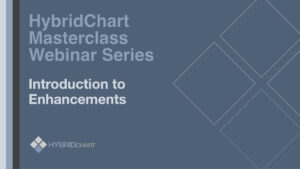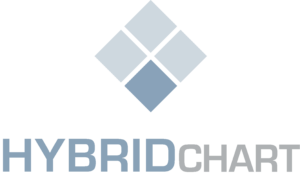Going home from the hospital can be dangerous. Consider the story of Joyce Oyler, who was a high-risk cardiac patient. Despite having access to home health care, she died after being given a daily prescription of medication that, while named similarly to the medication she was supposed to be taking, was not correct and ultimately toxic for her.
In the same article, Alicia Arabe, assistant professor at Johns Hopkins School of Medicine in Baltimore, says, “Poor transitional care is a huge, huge issue for everybody, but especially for older people with complex needs.”
Preventing this tragedy didn’t hinge on one thing. As Ms. Oyler’s daughter notes, “There were many layers and mistakes made after she left the hospital. It should have been caught about five different ways.”
One of the best ways to ensure that patients have a positive outcome after hospital admission is appropriate outpatient follow up. For high-risk patients in particular, this means more than just going to an appointment or preventing a readmission. Effective outpatient follow-up care loops in transitional care resources when needed, completes and reviews testing, and allows for medication reconciliation and management.
Here are some strategies to ensure that high-risk patients get the follow-up care they need after hospitalization:
Identify High Risk Patients
No matter what medical specialty you work in, you can probably quickly identify a few specific kinds of high-risk patients who pose a risk of readmission or will need aggressive outpatient care. Using your rounding software or billing program, run reports of patients with ICD-10 codes that match those diagnoses who were seen in the hospital. Correlate that information with your schedule and other outpatient services, like support groups and CCM programs, to ensure that the patients are getting the care they need.
Alert Your Team
Good medicine is a team sport, especially where complex patients are concerned. Nurses, medical assistants, and other caregivers in the outpatient practice are an important supplement to patient care. Taking the time to alert them that a high-risk patient is in the hospital can start the process of arranging any outpatient transitional care resources that are needed before they even leave the hospital.
Be Proactive, Especially When Patients Go Home
Let’s face facts: discharge instructions for patients going home are frequently terrible. They often contain pages of generic information about the patient’s condition that may or may not be relevant and are rarely tailored for that specific patient. Buried somewhere in there are follow up instructions, sometimes for multiple providers. Even those of us who know how to navigate the medical system can be overwhelmed.
Rather than counting on the patient to follow up on his or her own, use a tool that gives your staff back at the office the information they need to proactively contact the patient and arrange follow up. This serves several purposes: the patient doesn’t spend time waiting on hold trying to contact your office, your scheduling team has the information they need to schedule the appointment correctly, and there is an easy way to reconcile which patients should have come in for hospital follow up but didn’t.
Use Tools That Work Across Systems of Care
If your practice rounds at multiple hospitals, it can be easy to get bogged down by the workflows of individual facilities. Consider tools that can coordinate the discharge follow-up process the same way no matter where you round. This way, your staff can always access the information they need to identify high-risk patients and coordinate follow up. This provides efficiency for your team, so they don’t have to waste time managing things differently based on the hospital.
HybridChart is a best-in-class rounding tool that provides for discharge follow-up planning. Smart automation tools can alert your team about high-risk patients with zero extra clicks for providers. Visit our discharge planning and smart automation pages to learn more about how we can help your practice.
Meet EVOLVE by HybridChart – Our fourth generation software platform.
Take control of your entire workflow through a user-friendly solution created by a physician. Medical software too often fails to address the specific needs of providers. Rounding at one or more hospitals presents a unique challenge. There is the need for effective team collaboration and easy charge capture. Census management means true collaboration among provider and staff. Rounding at multiple facilities just got way easier.
Covering on-call now has the luxury of essential information for clean hand-offs.Charge capture takes less than five seconds. Diagnoses are easy to find and follow the patient. Customized charge menus make it easy to enter the correct charge. Don’t let billing for your work slow you down. Charge in real-time and focus on caring for the patient.
HybridChart has numerous levels of safeguards against missed charges. The Charge Checker feature will scan every day of an admission and assure there are charges. Using the Charge Matrix you have visibility of all charges from multiple providers per day for any given patient.
Most practices see a revenue increase of 8-10% after using HybridChart – attributed to capturing every charge for every patient. Charges are complex enough with just the diagnosis codes and charge codes. To make your charges accurate HybridChart allows you to easily adjust the Date of Service and assign Secondary Billers such as nurse-practitioners and physician assistants. Modifiers can be built into specific Billing Modules or choose from a customized list managed by your practice. Seamlessly navigate our Charge Capture workflow and save time without losing accuracy.
An automated charge capture system may be the most profitable investment that you can make in your practice today.
You can instantly boost your revenue by 10% using our modern, high-tech and easy-to-implement charge capture system.
Smarter Rounding and Workflow Software for Doctors
At HybridChart, we provide technology that connects your healthcare team, increases efficiencies, AND improves your bottom line. HybridChart’s cloud-based software adapts to your practice’s unique workflow and will improve your profitability and patient outcomes by utilizing our 5 features:census management, charge capture, secure messaging, discharge management, and data analytics.
NEVER miss another charge and get PAID for the work you do!
If you are interested in taking your medical practice to the next level and want to employ the best hospital charge capture practice available in the industry, come visit our website at www.hybridchart.com, or call us at 1-877-684-0608 for a demo today!





